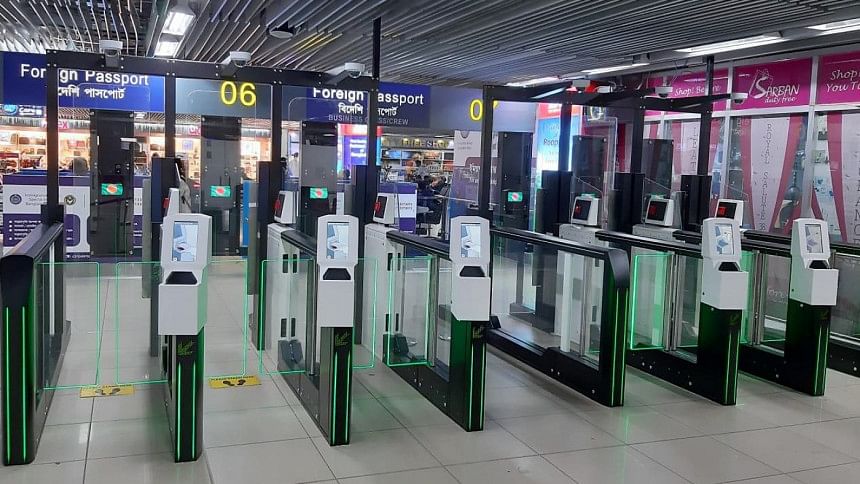What are e-gates and how do they work?

E-gates became operational today at Hazrat Shahjalal International Airport (HSIA) in Dhaka. A total of 12 e-gates have been installed in the departure area while three are at the arrival area of Dhaka airport, through which passengers today completed immigration within 18 seconds.
But what are e-gates and how do they exactly work? We try to explain:
What are e-gates?
ABCs, also known as e-gates, are automated self-service barriers that use data stored in a chip in biometric passports, as well as a photo or fingerprint taken at the time of entry, to verify the passport holder's identity.
How do e-gates work?
Biometric verification is performed on passengers using facial or iris recognition, fingerprints, or a combination of modalities. A physical barrier, such as a gate or turnstile, opens to allow passage after the identification process is completed and the passport holder's identity is verified. The gate or turnstile will not open if the passport holder's identification is not verified or if the system malfunctions and an immigration officer will meet the person.

Automated border control systems usually collect information on the biometric page of the passport, such as name, sex, date of birth, passport number, passport photograph, nationality, and passport country of origin. Other information, such as travel details, visa information, and the facial biometric template, may be collected as well.
Which company is installing the e-gates in HSIA?
Veridos Identity Solutions, a German IT infrastructure security firm is in charge of installing the gates at HSIA.
What's next?
Apart from Dhaka airport, six e-gates each have been set up at Shah Amanat International Airport in Chattogram and Osmani International Airport in Sylhet.
The government has a plan to set up 50 e-gates gradually at all the airports and land ports across the country under the "E-Passport and Automated Border Control Management Project".

 For all latest news, follow The Daily Star's Google News channel.
For all latest news, follow The Daily Star's Google News channel. 








Comments